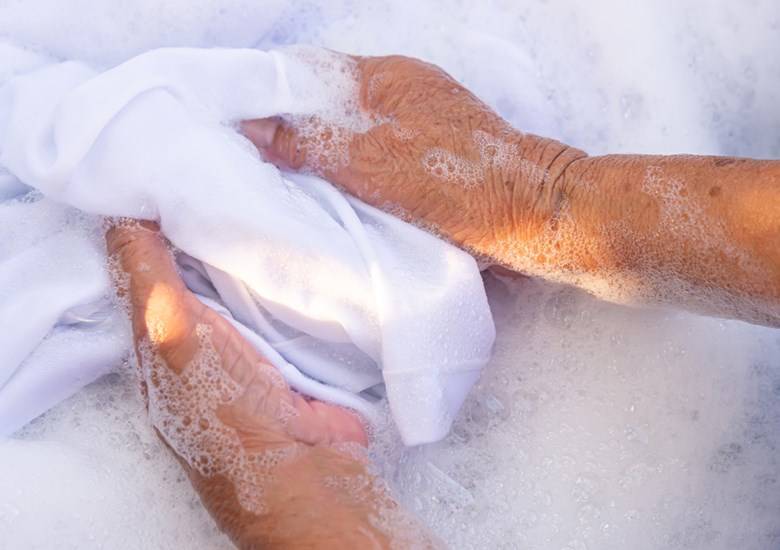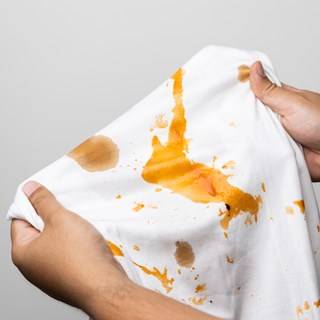Sorting your clothes
If you’re wondering how to wash clothes by hand, the first step is to sort your garments properly. This may seem like a simple task, but it’s crucial for achieving the best results. By sorting your clothes, you ensure that you wash similar fabrics and colours together, avoiding any mishaps.
Separate your clothes into categories such as whites, darks, delicates and heavily soiled items. This will prevent any colour bleeding or damage to delicate fabrics.
Sorting your clothes also allows you to assess the level of care each item needs. Delicate fabrics, such as silk or lace, require extra attention and should be washed separately. Heavily soiled items, like muddy jeans or stained underwear, may need pre-treatment before washing.
So, gather your laundry pile and let's start sorting. It may take a few extra minutes, but trust us, it's worth it for cleaner, longer-lasting clothes.
Pre-treating Identifying stains
Before you begin, identify the stains and assess their severity. This will help you determine the appropriate treatment method.
If you have any stubborn stains on your clothes, it's best to pre-treat them before washing. This helps to loosen the stain, which makes it easier to remove during the washing process. Avoid scrubbing stains on wool vigorously, as this can damage the fabric fibres. Instead, gently rub the fabric together to work the solution into the stain.
For common stains on silk, like food or drink spills, applying a small amount of stain remover directly to the affected area can work wonders. Alternatively, you can create a mixture of water and detergent and gently rub it into the stain.
If in doubt, test on a small, inconspicuous area before full application of any product to test it. Always follow the instructions on the back of the packaging of the product that you are using.
Start a deep clean
Now it's time to start washing your clothes. Begin by submerging the garments into the soapy water you prepared earlier. Make sure each item is thoroughly soaked and fully immersed in the water.
Gently agitate the clothes by swirling or squeezing them. This helps to loosen any dirt or grime and ensures the detergent reaches every fibre. Pay extra attention to areas with stains or heavy dirt and use a soft brush or your hands if needed.
Remember to be gentle, especially with delicate fabrics. Avoid aggressive scrubbing or wringing, as this can lead to damage and distortion. Instead, focus on gently working the detergent into the fabric to lift away dirt and stains.
Rinsing the clothes
After washing your clothes, it's crucial to remove all traces of detergent to ensure they’re thoroughly clean, so you'll need to rinse them properly. Start by draining the soapy water from the sink or basin.
Next, refill the sink or basin with clean, lukewarm water. Submerge the garments again and swirl them around gently. This will help to rinse off any remaining soap. Repeat this step until the water runs clear, indicating that all the detergent has been removed.
Rinsing is an important step to prevent any residue from irritating your skin or causing damage to your clothes.
Removing excess water
Once your clothes are rinsed, remove the excess water. Gently squeeze the garments to get rid of the water without wringing or twisting them. Wringing can cause stretching or misshaping, especially in delicate fabrics.
Instead, you can roll the clothes in a clean towel and press down to absorb more moisture. This method helps to remove water without putting excessive stress on the fabric.
Avoid using a dryer or hanging your clothes until they are damp, as this can also lead to stretching or misshaping.




